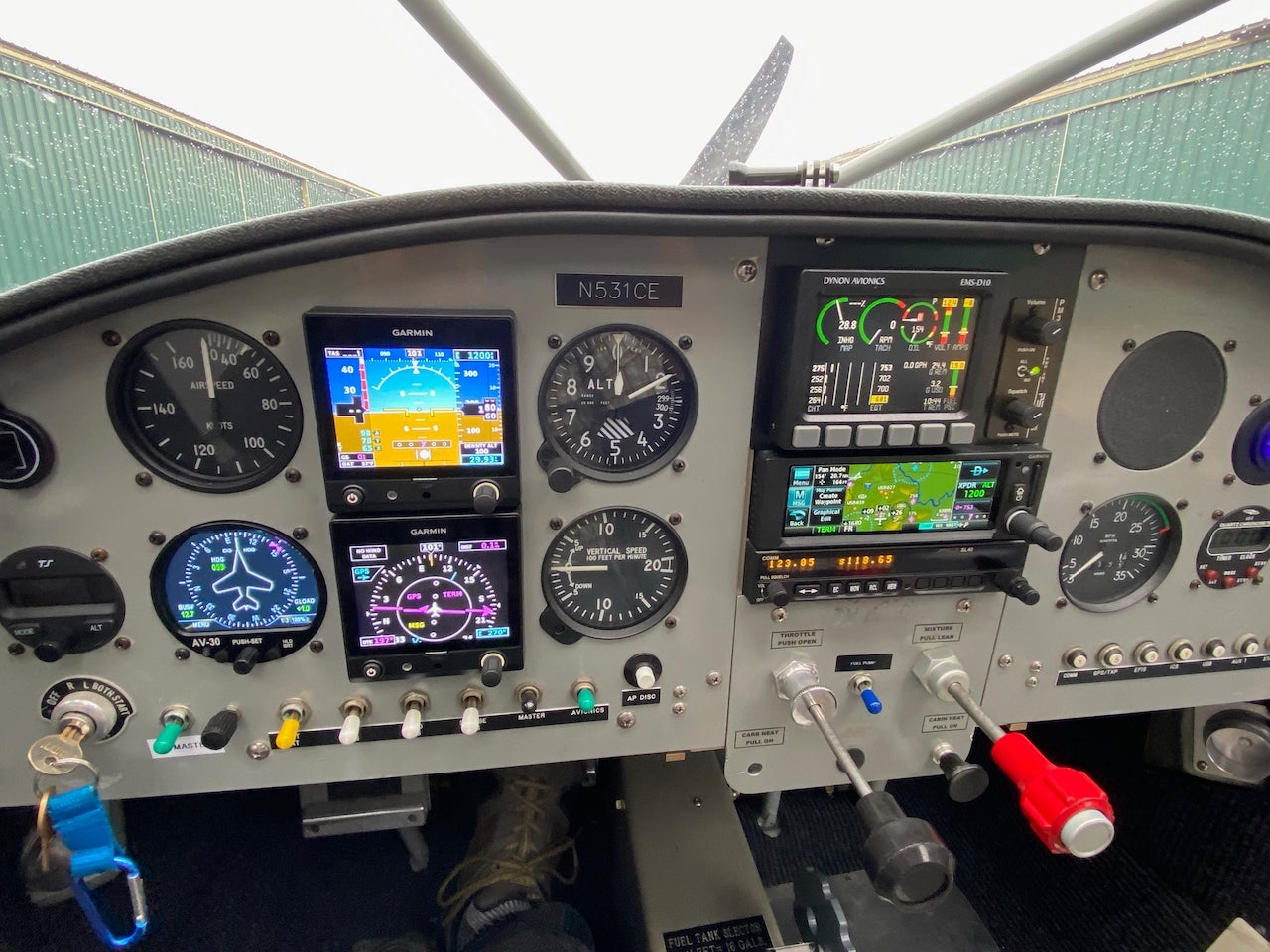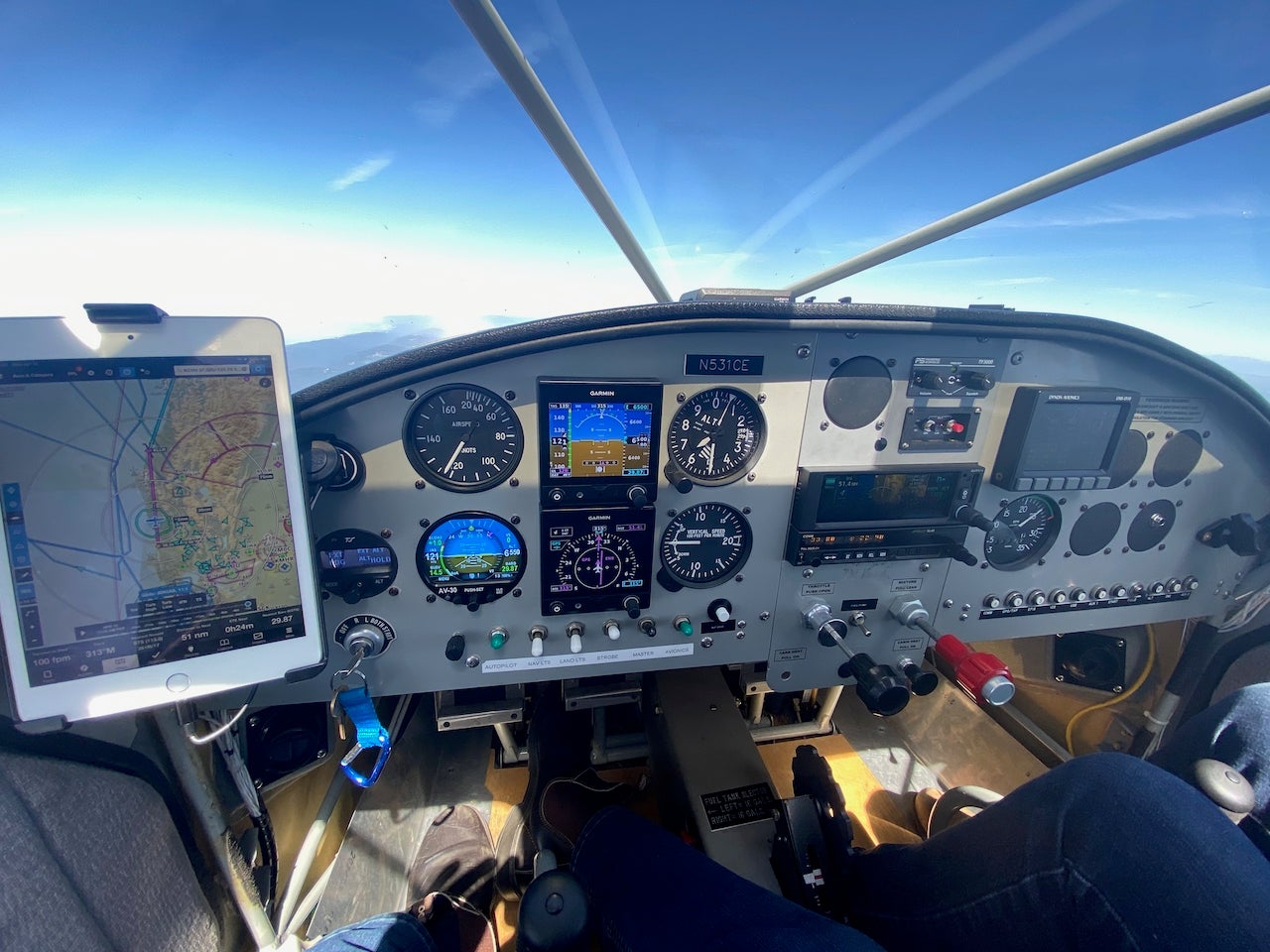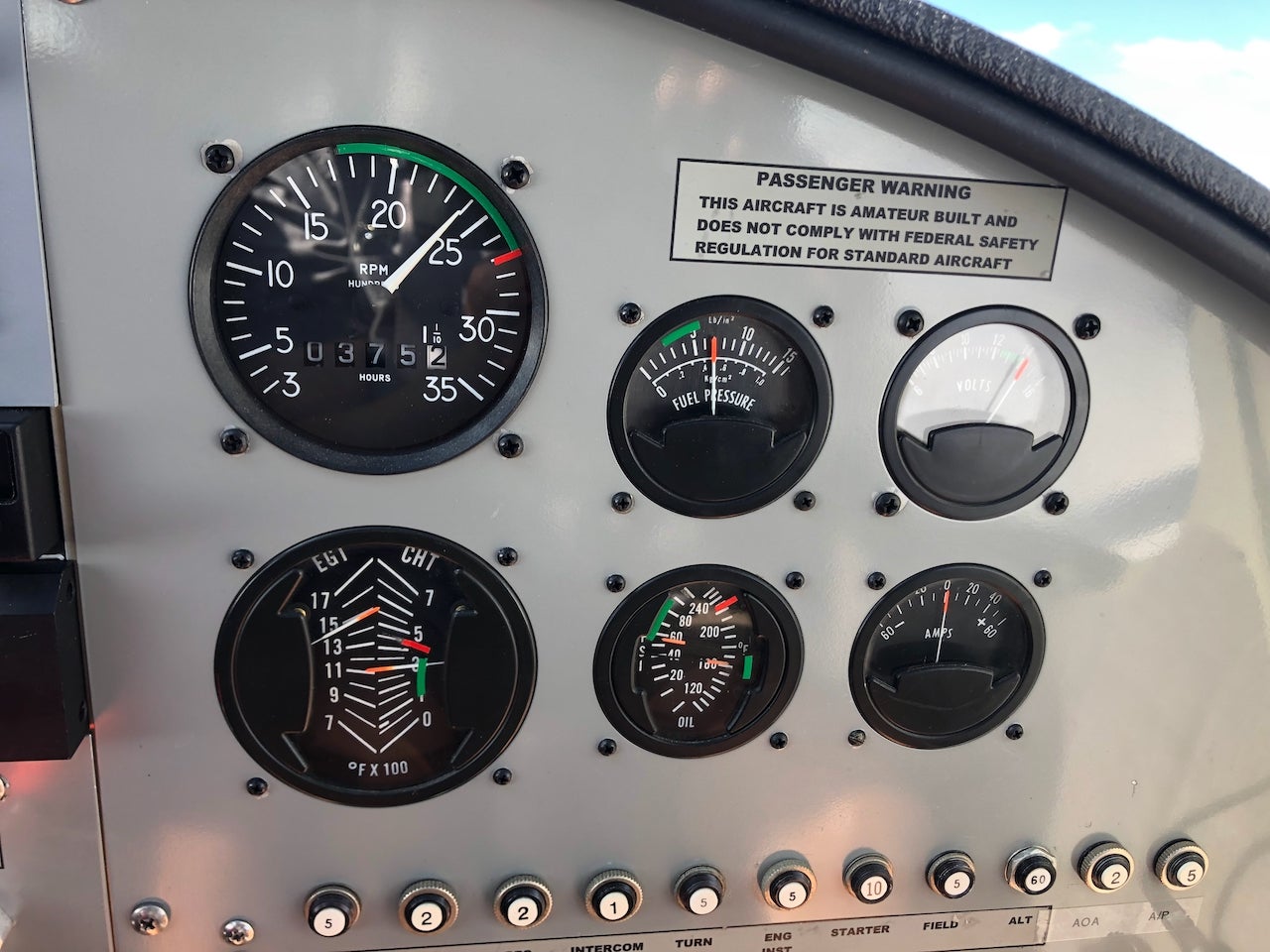
Sometimes the path of least resistance is only good for the short term. You choose the most expedient course from idea to execution, hoping that the compromises you made along the way are good ones. So it is with the location of the engine monitor in my GlaStar.
When I bought the airplane, it had a collection of analog gauges arrayed on the copilot’s side of the panel, fronted by a large mechanical tach, a large combined single-channel EGT and CHT (which never really worked, in my experience) and several 2.25-inch gauges for the rest. As someone who wants to know exactly what’s going on ahead of the firewall, this arrangement was insufficient and frustrating.
At the time I was ready to install a full engine monitor, the plan was for eventual expansion to a full EFIS in the airplane, replacing both the aged engine instruments and the array of round-hole flight instruments on the pilot’s side. And since the plan was for a Dynon SkyView HDX, it made sense to go with the Dynon EMS-D10, a “legacy” instrument that fits into a 3.125-inch hole. I could remove a number of the instruments on the right side, fit and wire the EMS—and then I’d have a fully functional engine monitor. What’s more, I left myself enough service loop to accommodate the SV-EMS-220 remote module that sends engine data to the SkyView network.

I knew that the location of the EMS-D10 to the right of the radio stack was less than ideal; the display is not large and not as bright as modern instruments, so I was expecting the display could be a challenge to read. I underestimated that challenge. In time, I found that depending on the glasses I was wearing—especially since I’m of “the age” where readers are necessary—it took too much head-craning to read the display easily. Especially during the busiest times in flight, I found myself ever more frustrated having to divide my scan between the primary instruments and the small engine monitor way over there.
One fall day with, apparently, not enough to do, I set about fixing this ergonomic dilemma. It took cutting a new panel in the center stack, reorienting the PS Engineering intercom—which, thankfully, has a vertical bezel on the flip side of the horizontal one—moving the ELT control head and extending a handful of wires from the EMS. The forethought in leaving myself a bit of extra slack in the rest of the wires, including the EGT/CHT thermocouple harness and the wires that penetrate the firewall paid off handsomely.

Now, with the EMS just above the Garmin GNX 375 GPS/transponder and only one “notch” over from the main panel, the engine monitor is much, much easier to read and incorporate into my scan. I feel less likely to miss some small change in indications, the kind too small to set off an alarm but that might warrant investigation anyway.
You might be asking why I didn’t just move the EMS-D10 over into the main pilot’s panel. After all, with two Garmin G5s and one uAvionix AV-30, I have plenty of altimeters and VSIs in the airplane, so I could lose one or the other. But the way my panel was originally cut, the EMS-D10A won’t fit alongside the central G5s; the Dynon is too wide.
If the SkyView HDX hadn’t been in the plan for my GlaStar, a better solution would have been a dedicated, round-hole engine monitor like a JPI or Electronics International that I would have placed alongside the central G5s. A Garmin GI 275 with the remote module would have worked as well, although that’s a more expensive option. Any of these would have accomplished what I ultimately preferred: the engine instruments near enough to the primary flight instruments for a no-head-turn scan. Call me lazy.













